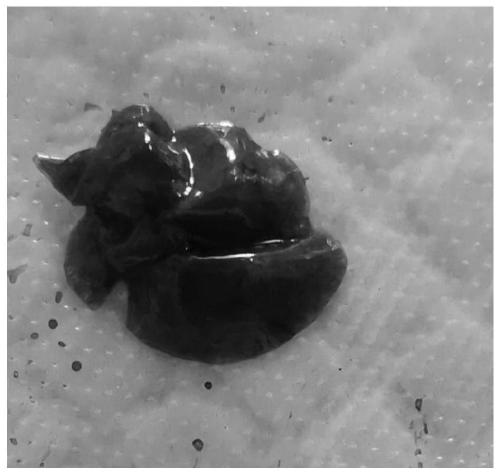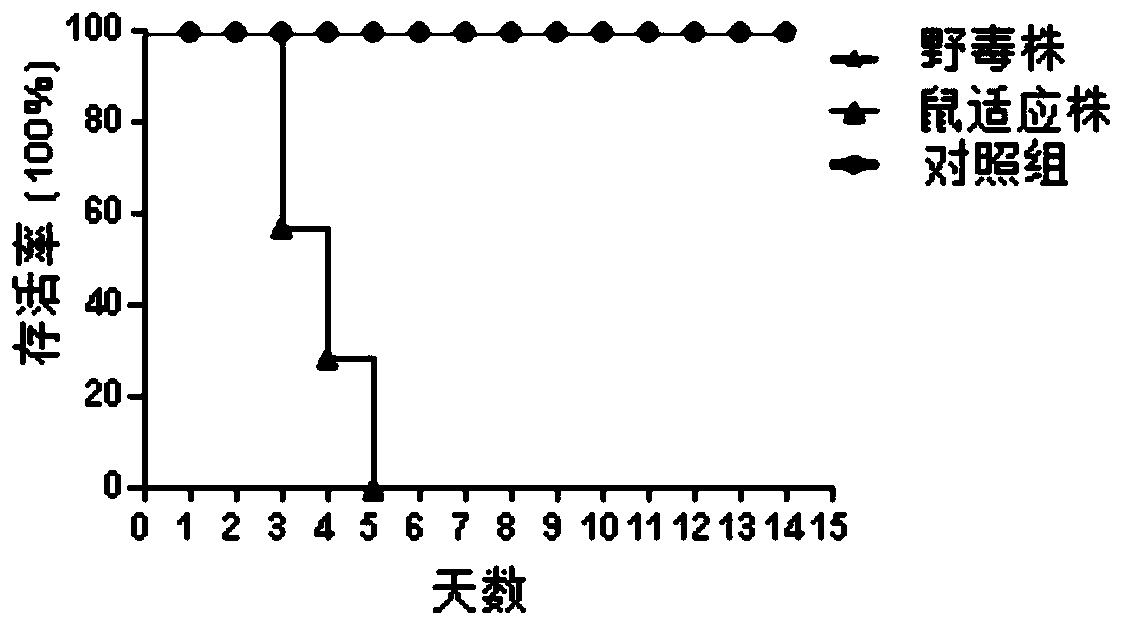H3N2 subtype canine influenza virus mouse adaptive virulent strain and application thereof
A canine influenza virus, H3N2 technology, applied in the field of microbial engineering, can solve problems such as difficulty in evaluating effects, adaptive mutant virus strains, etc., to achieve the effect of enhancing virulence
- Summary
- Abstract
- Description
- Claims
- Application Information
AI Technical Summary
Problems solved by technology
Method used
Image
Examples
Embodiment 1
[0046] Isolation identification and cultivation of embodiment 1 virus strain
[0047] Since 2016, H3N2 CIVs have caused nationwide epidemics in my country, and the epidemic strains in 2016 and the Asian epidemic strains in 2006 are different evolutionary branches. At present, the strain of this evolutionary branch is widely prevalent in my country. In 2017, the present invention detected a new type of H3N2 CIVs (QK32 for short) from the oral swab of a pet dog with clinical respiratory symptoms in Jilin City, and obtained the isolate from the allantoic fluid of chicken embryos. The separation method is as follows: vortex the oral swab of the dog with sterile PBS (pH: 7.2) for 30 seconds, put it in a centrifuge at 4°C at 4000r / min, and centrifuge for 5 minutes. Aspirate the supernatant and add penicillin and streptomycin with a final concentration of 1000IU, inoculate 9-day-old SPF embryos, place them in an incubator at 37°C for 72 hours, and after refrigerated at 4°C for 0.5h,...
Embodiment 2H3
[0061] The preparation of embodiment 2 H3N2 subtype canine influenza virus murine adaptation virulent strain
[0062] The present invention uses QK32 as the original virus strain, after several attempts to change the age of the inoculated BALB / c mice and the content of the inoculated virus, a preparation method is finally determined to obtain the mouse-adapted H3N2 subtype canine influenza virus that can cause death in mice. Virulent strain. The specific operation method is as follows:
[0063] Step 1: Inoculate 9g-10g BALB / c suckling mice with 25ul content of 106 / 100ulEID50 by bilateral intranasal method respectively. At 72 hours after inoculation, dissect the lung tissue and grind it in a tissue homogenizer after quick-freezing on dry ice , 8000×g for 5min, take the supernatant, put it again at 12000×g for 5min, take the supernatant tissue fluid and inoculate it into 9g~10g BALB / c suckling mice, each mouse is inoculated with 25ul of virus solution. The mouse lungs were con...
Embodiment 3
[0070] Embodiment 3 Identification of mouse-adapted virulent strains of the present invention
[0071] Take the 26th generation mouse lung tissue grinding solution in Example 2, use the method in Example 1 to extract viral nucleic acid, obtain cDNA through reverse transcription, and use the primer sequences and PCR reaction conditions in Example 1 for amplification. Sequence determination was performed by agarose gel electrophoresis and gel recovery. The full sequence of the non-coding region of the HA fragment of the mouse-adapted virulent strain is shown in SEQ ID NO.1, the full sequence of the non-coding region of its NA fragment is shown in SEQ ID NO.2, and the full sequence of the non-coding region of its NP fragment As shown in SEQ ID NO.3, the full sequence of the non-coding region of its PA fragment is shown in SEQ ID NO.4, the full sequence of the non-coding region of its PB1 fragment is shown in SEQ ID NO.5, and the non-coding region of its PB2 fragment The full seq...
PUM
| Property | Measurement | Unit |
|---|---|---|
| diameter | aaaaa | aaaaa |
Abstract
Description
Claims
Application Information
 Login to View More
Login to View More - R&D
- Intellectual Property
- Life Sciences
- Materials
- Tech Scout
- Unparalleled Data Quality
- Higher Quality Content
- 60% Fewer Hallucinations
Browse by: Latest US Patents, China's latest patents, Technical Efficacy Thesaurus, Application Domain, Technology Topic, Popular Technical Reports.
© 2025 PatSnap. All rights reserved.Legal|Privacy policy|Modern Slavery Act Transparency Statement|Sitemap|About US| Contact US: help@patsnap.com



